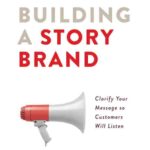Do you remember “paint by numbers”? You’d open the kit, and there it was: a pre-designed picture with little numbered sections, each corresponding to a color. It was designed to make you feel like an artist, even if you had no training. But here’s a question—why numbers? Wouldn’t it make more sense to use letters? After all, there are 26 letters in the alphabet and only 10 numbers.
This isn’t just a silly observation—it’s a window into how we often accept conventions without question. We go through life, and often business, doing things the way they’ve always been done because… well, because they’ve always been done that way.
The Danger of Default Thinking
We all fall into patterns. It’s easier. Less mental effort is required to keep doing what has worked in the past. But default thinking can be dangerous, especially in business. If you’re not actively challenging your assumptions, you might be stuck in a system that no longer serves you.
Sometimes the world changes, and our behaviors, frameworks, or expectations don’t catch up.
Common Business Assumptions Worth Rethinking
Here are a few “paint-by-numbers” style assumptions that might be quietly limiting your success:
- “I need a traditional business plan before I start.”
Many entrepreneurs spend months perfecting a business plan before even validating their idea. Today’s lean startup model encourages launching with a Minimum Viable Product (MVP) and testing the market early. - “Bigger is better.”
More employees, more space, more marketing dollars. But sometimes a small size advantage gives you agility that large companies can’t match. Just ask any scrappy solopreneur disrupting the status quo. - “Marketing = Social Media.”
Social platforms have their place, but relying solely on Instagram or TikTok is risky. A better strategy might be building a robust email list, leveraging SEO (until it dies—more on that later), or even hosting real-world workshops. - “MPG is the best way to compare vehicles.”
As another post on SteveBizBlog.com argues, measuring a car’s cost of operation in real dollars (like fuel cost per year) might be far more useful than abstract numbers like miles per gallon. It’s another example of how outdated measurements can mislead decision-making.
What Changed… But You Didn’t?
Think about what’s changed in the world of business:
- AI is changing SEO overnight.
As Google, Bing, and AI chatbots generate instant answers to user queries, your blog traffic may decline even if your content ranks well. That means traditional keyword SEO strategies may not work the way they used to. Time to test new content formats or explore syndication on platforms like Medium, Substack, or even AI-integrated tools like voice search assistants. - Remote work isn’t a “perk” anymore—it’s a baseline.
If you’re still offering remote flexibility as a competitive advantage in hiring, that assumption is past its prime. What’s next? - Tariffs and trade policy can flip an industry overnight.
One administration imposes tariffs, another removes them. If your cost structure relies on global imports or exports, it’s smart to model a few “what if” scenarios. For example, some U.S.-based manufacturers briefly thrived under Chinese steel tariffs, only to suffer when they were rolled back or bypassed.
How to Break Free From Assumptions
Here’s a simple framework to help you break out of assumption-based behavior:
- List your assumptions.
Don’t just think them—write them down. What do you believe about your customers, your pricing, your product, your employees? - Ask “Why?” five times.
This technique (rooted in Toyota’s lean manufacturing process) helps you find the real reason behind a process. - Run small tests.
Before blowing up your whole business model, test a new assumption with a small-scale experiment. - Stay curious.
Follow thinkers and doers outside your industry. Innovation often comes from unexpected sources.
Back to Letters vs. Numbers…
If you were designing a coloring system from scratch today, would you use numbers or letters? Most people default to numbers, but when you think critically—26 options vs. 10—it’s clear the alphabet offers more flexibility.
That’s the power of challenging assumptions. It doesn’t mean that every long-held method is wrong—it just means you give yourself the freedom to do things better.
Are you following outdated practices out of habit or comfort? What would your business look like if you stopped painting by numbers and started designing your own system?












